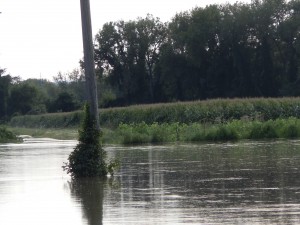Help Solve Food Waste–With Your Phone Apps

I have a moral problem with food waste when others are going hungry. In the developed world, our hunger crisis has nothing to do with insufficient supply–and everything to do with throwing out vast quantities of usable food, and the people who need it being unable to get it. 30 to 40 percent of all food grown in the US is tossed. Some gets thrown away because it spoils–but 1) a whole lot of perfectly good food goes to the landfill, and 2) if one area has gone bad (like mold one side of a block of cheese), in many cases, the item can be trimmed and most of it saved. Smell, taste, and appearance can help you decide what can be salvaged and what should go in the compost.
Where it does food waste come from? To name a few: Restaurants cooking more than they sell. Uninformed consumers who think food has to be dumped once it passes its sell-by date. Produce wholesalers who reject fruits and vegetables because of non-uniform appearance. Commercial processors who are not set up to capture and process every bit.
This New York Times article describes two apps, Too Good to Go and Flashfood, that match unsold food with ready bargain-seeking buyers. I think this is terrific–a win-win-win. It reduces costs for restaurants, who still get paid a reduced price rather than having to pay to throw it away. It reduces costs for consumers who’d like a good meal and don’t mind taking whatever’s available. It reduces pressure on landfills, which are overrun with wasted food, and on the environment and climate, which take multiple hits when food is wasted.
Grocery stores need similar programs. One step in the right direction is services like Imperfect Foods and Misfits Market, both of which sell reject produce direct-to-consumers.
On the consumer side, the biggest results will come from education. We need trainings that demonstrate:
- What foods really aren’t safe past their expiration dates, and which are perfectly fine (in general, meat products should be used or frozen before their expiry dates, opened refrigerated dairy is typically good for at least three days beyond, and unopened often for a week or two, while many processed foods are shelf-stable for years)
- How to preserve various foods
- Where to donate if you have too much food that’s still good
- How buying locally grown organic foods minimizes waste (including the huge environmental burden of transporting foods across oceans and continents
- What makes sense for your size household to buy in bulk, and what’s much better to just buy as much as you need inn the near future
- How to use smell, appearance, and small tastes to determine whether food is still ok
- When it makes sense to trim bad parts off, and when to discard the whole thing
- How to use leftovers without getting bored with them
- Environmentally friendly options for disposing of spoiled food (compost, slops for animals, etc.)

